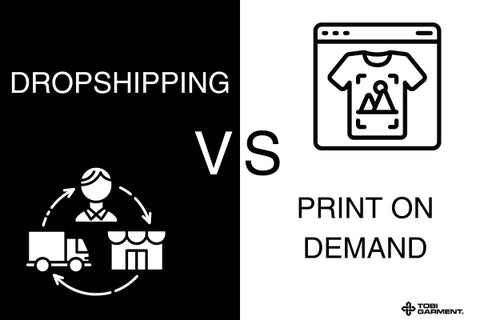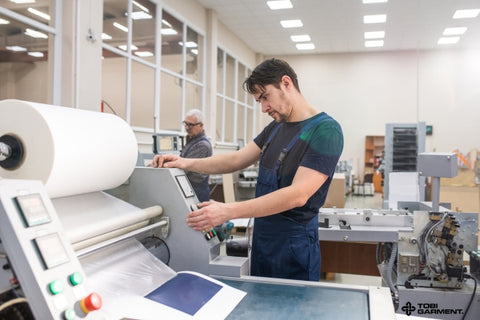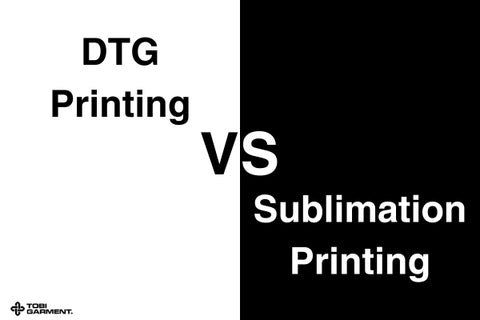
In the world of e-commerce, two popular business models stand out: Print on Demand (POD) and Dropshipping. Both options offer unique advantages and challenges, making them appealing to different types of entrepreneurs. In this article, I will explore these two models in detail, helping you decide which one aligns best with your business goals.
Understanding Print on Demand: Create and Sell Your Own Products
Print on Demand is a business model that allows you to create custom products without the need for inventory. You design the products, and a third-party provider prints and ships them directly to customers when an order is placed. This model is particularly popular for items like t-shirts, mugs, and posters.

How Print on Demand Works: A Step-by-Step Guide
- Choose a Niche: Identify a market that interests you. This could be anything from fitness apparel to personalized home decor.
- Create Designs: Use graphic design software or online tools to create unique designs for your products. If you're not a designer, consider hiring a freelancer or using AI-generated designs.
- Select a POD Provider: Research and choose a reliable print-on-demand service like Printful, Teespring, or Redbubble. These platforms handle printing, shipping, and customer service.
- Set Up Your Online Store: Use e-commerce platforms like Shopify or Etsy to set up your store. Integrate your POD provider for seamless order fulfillment.
- Market Your Products: Use social media, email marketing, and SEO strategies to attract customers to your store.
- Monitor and Optimize: Track your sales and customer feedback to refine your designs and marketing strategies.
Read more: Best T-Shirts for Printing: Quality Meets Value
Benefits of Print on Demand
- Customization: You have complete control over product designs, allowing you to cater to specific customer preferences.
- Higher Profit Margins: Since you set the prices, there is potential for higher profit margins compared to dropshipping.
- No Inventory Risk: You only pay for products after they are sold, minimizing financial risk.
- Branding Opportunities: You can create a unique brand identity through custom designs and packaging.
Challenges of Print on Demand
- Design Skills Required: Creating appealing designs may require some graphic design skills or the budget to hire a designer.
- Quality Control: Since you don’t handle the products directly, ensuring quality can be challenging.
- Longer Fulfillment Times: Depending on the POD provider, shipping times may be longer than traditional retail.
Read more: Start a Shopify T-Shirt Business: Unleash Your Creativity
Dropshipping Explained: Sell Products Without Holding Inventory
Dropshipping is another e-commerce model where you sell products without holding any inventory. Instead, you partner with suppliers who fulfill orders on your behalf. This model is ideal for those looking to start a business with minimal upfront costs.

How Dropshipping Works: A Simple Overview
- Choose Your Niche: Like POD, start by selecting a niche that interests you and has market demand.
- Find Suppliers: Use platforms like AliExpress, Oberlo, or SaleHoo to find reliable dropshipping suppliers.
- Set Up Your Online Store: Create your e-commerce store using platforms like Shopify or WooCommerce.
- List Products: Import product listings from your suppliers to your store, ensuring you set competitive prices.
- Market Your Store: Promote your store through social media, SEO, and paid advertising to attract customers.
- Process Orders: When a customer places an order, you purchase the product from your supplier, who then ships it directly to the customer.
Advantages of Dropshipping
- Low Startup Costs: You don’t need to invest in inventory, making it easier to start a business with limited funds.
- No Inventory Management: Suppliers handle inventory, allowing you to focus on marketing and customer service.
- Wide Product Range: You can offer a diverse range of products without the risk of unsold inventory.
Read more: What Is All Over Print? A Comprehensive Guide About AOP
Disadvantages of Dropshipping
- Limited Profit Margins: Since you’re competing with many other dropshippers, profit margins can be lower.
- High Competition: The low barrier to entry means many people are selling similar products, making it harder to stand out.
- Supplier Reliability: You rely on suppliers for product quality and shipping, which can lead to issues if they fail to deliver
Print on Demand vs Dropshipping: A Side-by-Side Comparison
To help you make an informed decision, let’s compare these two models across several key factors:
|
Factor |
Print on Demand |
Dropshipping |
|
Startup Costs |
Moderate (design and platform fees) |
Low (no inventory costs) |
|
Product Selection |
Limited to what you can design |
Wide range of products available |
|
Customization |
High (custom designs) |
Low (generic products) |
|
Inventory Management |
No inventory risk |
No inventory management |
|
Shipping Times |
Can be longer due to printing |
Generally faster, depends on supplier |
|
Profit Margins |
Potentially higher |
Generally lower due to competition |
|
Control Over Quality |
Limited (depends on POD provider) |
Limited (depends on supplier) |
|
Branding Opportunities |
High (custom branding) |
Low (generic branding) |
Overcoming Common Misconceptions About Both Models
Many misconceptions surround both Print on Demand and Dropshipping. Here are a few common myths and the realities behind them:
- Myth: You can get rich quickly with either model.
- Reality: Both models require time, effort, and strategic planning to become profitable.
- Myth: You don’t need to market your products.
- Reality: Effective marketing is essential for both models to attract customers and drive sales.
- Myth: Quality is guaranteed with POD and dropshipping.
- Reality: Quality control is a challenge in both models. It’s crucial to choose reliable providers.
Read more: Understanding Types of Shirt Printing: A Simple Guide
Conclusion
Choosing between Print on Demand and Dropshipping ultimately depends on your business goals, skills, and preferences. If you value customization and branding opportunities, Print on Demand may be the right choice for you. However, if you prefer a lower-risk model with a wide product selection, Dropshipping could be more suitable.
FAQ
1. Can I use both Print on Demand and Dropshipping in my business?
Yes, many entrepreneurs successfully combine both models to diversify their product offerings.
2. How do I find reliable suppliers for Dropshipping?
Platforms like AliExpress, Oberlo, and SaleHoo can help you find reputable dropshipping suppliers.
3. What are the best platforms for Print on Demand?
Some popular POD platforms include Printful, Teespring, and Redbubble.
4. How do I market my Print on Demand or Dropshipping store?
Utilize social media, SEO, email marketing, and paid ads to attract customers to your store.
Read more related posts from Tobi Garment:



